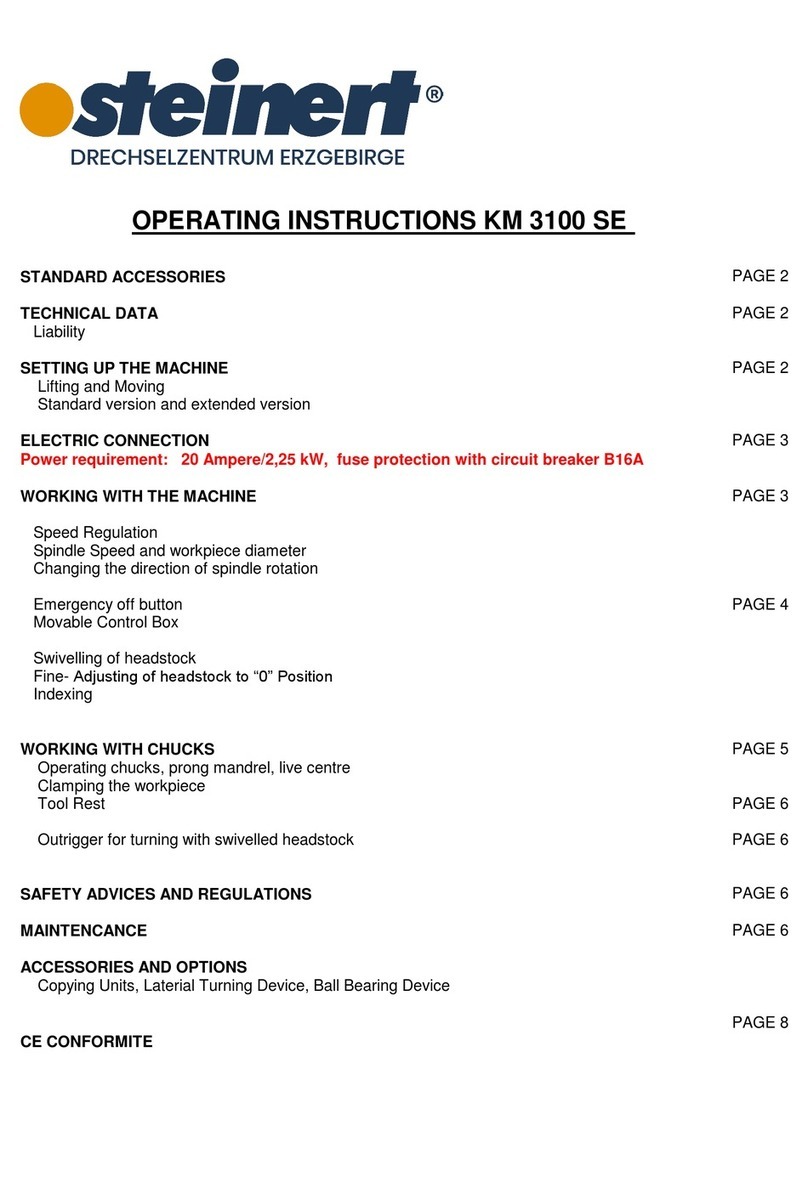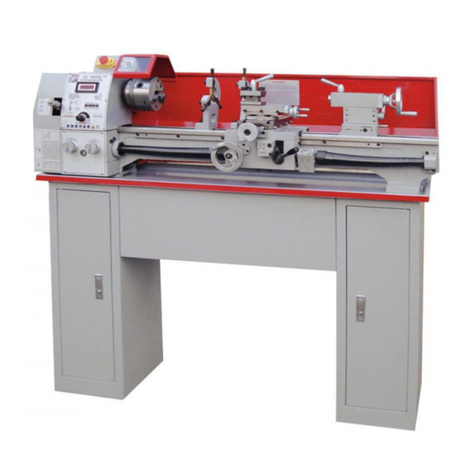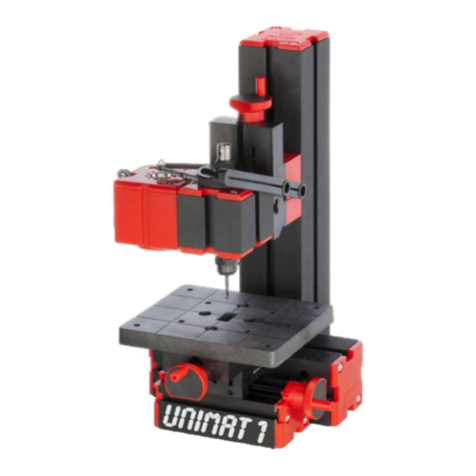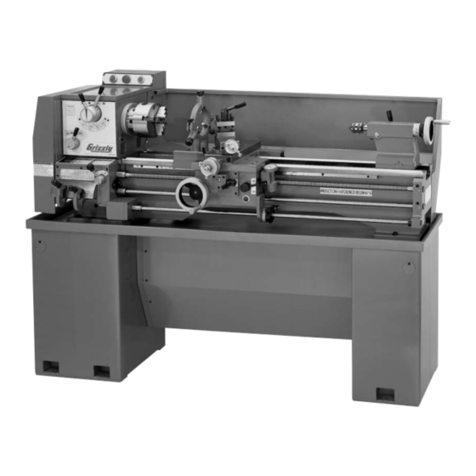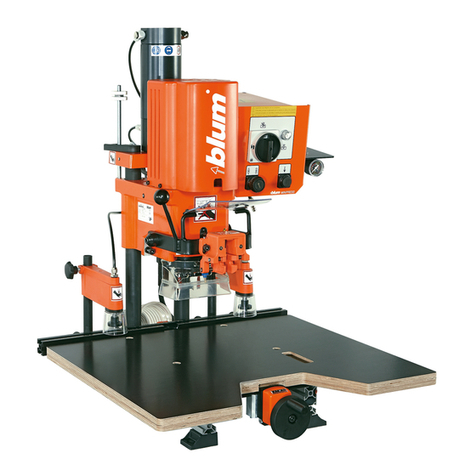steinert KM 1450 User manual

OPERATING INSTRUCTION KM 1450
03-2020
Standard Accessories
2
Technical Data
3
Liability
Setting up: Benchmodel or Standmodel
Electric Connection
4
Operating the Lathe
Speed Regulation with Potentiometer
Changing the spindle direction
Mainswitch, ASS-Safety System at Spindle
Magnet Box with buttons and switches
5
“0” Point adjustment for Tip-to-Tip alignment
6
Swivelling of Headstock
7
Operating the chucks
Safety instructions, clamping of workpieces
8-9
Tool Rest Base/Support and upper part
10
Outrigger and Bed Extension (options)
10
Maintenance
11
Declaration of conformity

Headstock
Hinge for Vee-belt-cover
Lock pin for 36-indexing system
Digital Display for read out
The adjusted spindle speed
RED main Button “on/off”
If button is pushed:
Lathe is disconnected from electric mains
all buttons of Mobile Box without function
Black Lock Pin for Headstock swivelling
Vee-Belt-POulley with integrated
indexing system
Handle to lift motor for changing
vee-belt
Black lock-pin for 36-division
indexing with automatically lock
if in unlocked postion

STANDARD ACCESSORIES
4-prong mandrel MT2 D=25 mm
for spindle inner cone
Pictures shows also the ASS-safety-ringnut
at the spindle and scale of indexing system
Live centre with ball-bearing MT2/60°
for cone of tailstock quill
quill with engraved scale
1 Tool Rest support
1 Tool Rest 350 mm, stem D=30 mm
1 Double cone MT2/MT2 for re-adjusting
“0” Zero-Point Adjustment

Pin to lock spindle
to loose the chucks from spindle thread
never insert the pin into the boring of
the handwheel sleeve !!
1 long bar D=8 mm to push out the prong mandrel
from spindle cone
1 Pin D=8 mm for chucks with a Bo=8,1 mm
to loose the chuck from spindle thread

TECHNICAL SPECIFICATIONS
Centre height
200 mm
Centre Distance
710 mm
Swing over bed
400 mm
Turning Diameter with outrigger
660 mm max.
Hollow Spindle
D=10 mm with inner cone MT2
Spindle thread outside M33x3,5 with centering collar
and ASS safety-ring-nut
Spindle speed
3 step pulley:
40-850 80-1.645 150-3.025 rpm/min
Max. permissible workpiece D
400 mm 220 mm 130 mm
Tailstock
Cone MT2
Tailstock Quill
100 mm stroke with engraved scale
Motor Power
Motor 400 V/3 ph/2 HP/1,5 kW/50-60 Hz
Electric mains of inverter: 230 V/1 ph
Vee-Belt
Poly-V-Belt J210, 10 ribs
Electric Box
Inverter FU 230 V/1 ph /EMV conform
with undervoltage and overload protection
In case of mains failure: prevents self-staring
of the lathe
2 sockets at side of lefthandside of foot
(if foot is mounted)
for additional equipment or light
Dimension of Lathe bed
1.150 mm
Dimension over all
1.450 mm/width 600 mm
Weight Benchmodel
approx. 110 kg
Weight with Stand
approx. 185 kg
Paint
RAL 9002 and RAL 9007
Warranty
1 year Electric
3 years mechanical parts
WEEE-Reg.Nr.
DE 79137012
Subject to change without notice
The lathe meets the safety regulations

LIABILITY
It is not permitted to make alterations or additions to the construction of the machinery supplied, to parts of the
machinery supplied or to accessories. Any warranty and liability claims become void in such case.
SETTING UP THE MACHINE
The anti-rust protection must be removed from the bright machine parts before first use.
Remove grease from inner cones of spindle and quill.
BENCHMODEL
We recommend an adequate long and stable base which should not vibrate, f.e. workbench or
Joiners bench with a minimum length of 150 mm to fasten/screw the lathe.
The inverter is mounted in a separate box, place or hang the box below the workbench or at the wall
do not place it near the lathe, protect it from chips/dust . Ensure that the inverter has enough
ventilation and is prevented against overheating
STANDMODEL (legs option)
If your lathe comes with dismounted legs:
Place the lathe onto a stable workbench or table, screw on the legs from the lower side.
Adjust and level the lathe with spirit level by the M12 screws
picture left shows parts supplied standard and righthand side how to use it
the adjusting screws are just to level the lathe if the floor is uneven
if the optional feet are dismounted for transport:
the lathe is screwed with plates onto the palet
first remove the small plates and screws, use then the supplied screws M12 for the legs and also
for the inverter to fix it inside at the LEFTHAND SIDE of foot: helpful with 2 Manpower
ELECTRIC CONNECTION
The lathe is supplied complete with a plug 230 V/1 ph for electric mains

OPERATING THE LATHE
SPEED REGULATION
the spindle speed is automatically stopped if the vee-belt cover is opened!
Push red main Button “OFF” before you open the vee-belt cover!
Infinitely speed regulation is performed by the 3 step pulleys:
Changing vee-belt to requested pulley:
loosen the motor clamping by handle, move it forwards
change vee-belt onto the requested pulley step by “moving” the pulley by hand forward/reverse
(easier handling)
Vee-belt Tension
fasten clamping leve, do not use too much tension because high tension can cause
vibration, wear of bearings and veebelt, could also cause damage on the motor-schaft
if working with low speed up to 300 rpm use vee-belt-pulley step 0-850 rpm to avoid power loss
and to ensure a sufficient power at the lowest speed
close vee-belt pulley correctly otherwise the motor will not run (safety switch inside)
regulation of spindle speed only while spindle is turning
SPINDLE SPEED AND WORKPIECE DIAMETER
The maximum permissible peripheral speed = 3.000 U for a maximum workpiece diameter of 130 mm
Watch the stickers at headstock for the adjusted speed and the max. workpiece diameter
The adjusted speed can be read out at the digital display
CHANGING TURNING DIRECTION/ROTATION OF SPINDLE
With the potentiometer at mobile box = righthanded rotation clockwise
Up from series 08-2017 the spindle is fitted with the ASS safety system resp. ring-nut at spindle nose
in any case of righthand rotation:
use only chucks with the optional security ringnut in chuck seat
The safety system works only with the security ring (standard) which is locked into the ring-nut
of the spindle and the ring-nut of the chuck
If the turning direction is changed by the selector switch, the inverter will automatically slow down the speed:
spindle starts in the opposite direction with speed adjusted before.
For your safety: slow down the potentiometer to “0” before changing the spindle direction
and use only chucks with security Lock system as described before

MAINSWITCH and EMERGENCY-OFF-BUTTON
The lathe is switched on by the RED Main Button at the headstock: release button
Not until then are all switches/buttons at the Mobile box activated.
During working with the lathe use only the buttons and functions at Mobile Box
After working time: push in the red main switch button at headstock to disconnect the lathe
from electric mains.
The main switch is at same time used as Emergency-Off-Button:
by turning the switch you activate or deactivate electric power
MOVABLE OPERATING BOX
The box is equipped with a “magnet” and can be placed at any position onto the lathe bed
The functions of switches see sticker:
Green Button = Start
Red Button = Stop
Selector Switch black for left/right
The correct adjusted direction for turning
= anticlockwise
Potentiometer for speed regulation
+ = increasing of speed
_ = decreasing of speed
“0” POINT ADJUSTMENT OF HEADSTOCK
This adjustment is fixed at the front of headstock
Fixing the “0” point system
Loosen clamping lever at headstock
Push down the slide with yellow knob
between the bed guiding
Swivel headstock slightly to the front guiding
and touch it
Clamp lever of headstock
The headstock is now exactly aligned to the
middle
Axis of the lathe (Tip-to-Tip)
If the headstock is moved or swivelled take care: the slide must be pushed upwards until it is “locked”
Turning cross timbers:
f.e. bowls, cups high accuracy is not required
Turning longitudinal:
before you start with any work requiring high accuracy as for peppermills, level your lathe again with
a spirit level and if necessary adjust also the “0-Point-Adjustment” (see also page 12)

SWIVELLING OF HEADSTOCK
the headstock can be swivelled in 6 different positions: 0/60/90/120/180/270°
Do not swivel the headstock during turning reps. If the spindle motor is running
switch off the motor/spindle
loosen the headstock fixing lever on lefthand side of headstock
push down the slide of “0” point fixing upwards until it is locked
pull out the black lock pin in front of the lathe and swivel headstock in the requested position
(take care of your fingers!)
the pin locks automatically in any of the 6 position
finally tighten lever of headstock again
36-INDEXING SYSTEM
The indexing system allows to make various borings or flutings in equal distances into any workpiece
The indexing plate with 36 borings is fixed with the vee-belt-pulley
The Lock pin, at the headstock front locks into any of these borings
The spindle nose has similar borings 0-36
In the pulled off position the lock pin has an adjustmend “by force” and cannot engage itself in case
of contact or vibration
Safety instruction : do not switch on spindle motor if the index pin is engaged
Any division which can be devided by 36 can be used: f.e. 36 : 9 = 4 divisions
OPERATING CHUCKS
The chucks are mounted at the external thread M 33x3,5 of the spindle
Spindle Lock Pin to loosen chucks:
Switch off spindle motor by the red button
of the mobile box
use always this button during your work, do
not stop by the main switch at headstock
only in case of danger
Lock the spindle by using the pin (see picture)
Screw on the chuck and tighten chuck with
The pin 8 mm supplied standard
Caution: Remove the 8 mm pin before machine is
switched on
True running of chuck only possible if the chuck lies flat with the face onto the spindle seat.
Do not use spindle motor power to fasten your chuck: you might get problems unscrewing the
chuck from spindle
Caution: if direction of spindle is changed to righthanded rotation secure the chuck against
running off the spindle (optional ring-nut in chuck seat)
prong mandrel on spindle/headstock: push out with the supplied long bar
live centre on tailstock: turn handwheel until centre is released from quill
Caution: loosen the clamping lever of quill before turning the handwheel
Hold live centre with hand to pretend from falling out

SAFETY INSTRUCTIONS
additional safety instruction see EG-conformity declaration
The vee-belt cover must be closed after each change of V-belt position by the hinge
otherwise motor does not run
Before the machine is switched on: turn potentiometer down to “0”
the selected speed must be checked against the maximum permissible workpiece diameter.
For large, out-of-balance workpieces adjust lowest speed, cut the workpiece before if possible
octagonal with a bandsaw
All clamping levers of spindle-/tailstock, tool rests etc must be tightened before beginning to work
any operating pins /keys must be removed from chucks, indexing pin from spindle
CLAMPING THE WORKPIECE
Turning between centres with the 4-prong-mandrel and live centre
centre the workpiece at both ends outside the lathe (make bearings last longer)
that markings are visible (f.e. use centering device 05.0336.00 or 05.0337.00)
press the driver prongs firmly into the workpiece by turning the hand wheel.
for hardwood and exotics we recommend to make a boring with a drill D=4 mm
tighten the set screws for the tailstock and the quill
Overhung turning with chucks
Cone-shaped chuck: Taper turn the workpiece to suit the chuck diameter and knock workpiece
outside of lathe into the chuck
Face plate: Secure the wooden discs with wooden screws (long enough) through the borings of plate
Disc-chuck: Screw the workpiece into the wooden screw: if necessary, drill core hole before
Wooden discs can be used to limit the depth of the woodworm-screw
Jaw-chucks: Increased risk to operator with jaws which project beyond the chuck body.
Remove the tightening key before starting the lathe
div.chucks i.e. SUPER NOVA2, NOVA G3, NOVA TITAN II, Sorby Patriot
see separate operating manual supplied with the chuck
HANDWHEEL TAILSTOCK
Please notice that the handwheel is no a precision part, , the run-out accuracy of the handwheel
has NO influence to the run-out-accuracy of the spindle
TOOL REST
Move the tool rest as close as possible to the workpiece, re-adjust it during the work.
Take care of the square dimension of your workpiece.
Move tool rest just if workpiece is not turning. Clamp fastening screws.
OUTRIGGER (Option)
The outrigger can be placed at any position at the lathe bed
Mounting
Move tailstock and toolrest complete out to the righthandside of lathe bed
Put the outrigger arm onto any position at the lathe bed and fix it
Advise: use headstock 180° degree swivelled and move it to the middle of lathe bed
The outrigger is placed at lefthand side of headstock
Insert tool rest bottm part into the arm of the outrigger and clamp it
Insert the supplied extension piece into the boring of the tool rest support, clamp it
Insert the tool rest upper part into the extension piece
.

BED EXTENSION (Option)
Screw the extension first just hand-tight with both lower screws at the face of lathe bed
Align the bed extension to the top and side of standard lathe bed (use only rubber hammer)
Check if there is no step, if the tailstock runs smooth over the both bed parts
Finally set in the upper screws and tighten all 4 screws
MAINTENANCE
The machine requires no maintenance.
The ball bearings are closed-off dust-proof and must not be lubricated.
Bright parts should be oiled occasionally to prevent corrosion. We recommend Ballistol Universal Oil
Item Nr. 85.0200.20
If turning whet wood, clean immediately the blank parts and oil them
Movable parts i-r- excenter shaft of tool rest base, quill with inner thread and spindle should
be oiled between 2-3 month, to ensure true running and prevend seizing up.

RE-ADJUSTMENT OF “0-Point-Locking”
Level the lathe with a spirit level (righthandside
and lefthandside cross to lathe bed)
+ use the supplied adjusting screws
+ metal and rubber plates
Double cone MT2/MT2
Insert Double cone into tailstock quill
Loosen tailstock clamping
Move tailstock close to the headstock until the
cone is inserted into the spindle cone
Clamp tailstock
bevore the „0-Point-Locking“ is re-adjusted:
the yellow bolt/slide must be pulled upwards until it is engaged/locked

Loosen clamping lever of headstock
move out the quilll of tailstock in direction to the
headstock by turning the handwheel
headstock moves lightly to the lefthandside:
clamp now the lever of headstock
headstock and tailstock stands to each other
Loosen tailstock clamping
insert the long bar from lefthandside through the
handwheel into the hollow spindle and push out
the double cone with tailstock to the righthand
side
Fasten Tailstock and Quill lever
insert long bar through the boring of tailstock
handwheel and push out the couble cone to
the lefthandside
Hold cone to avoid fall down

Headstock Clamping must be fixed
loosen the 2 x black hexagon socket screws
SW5 (left and right) from the 0-point-locking
use any pocket lamp to help adjusting the
0-point-locking by a “light-gap-method”
push down the yellow bolt/slide
it must touch now parallel the inner front of
lathe cheek without any light-gap-sight
press on the bolt and fasten evenly the both
black screws again
check lift of stroke up/down from the yellow
bolt/slide
ACCESSORIES, ATTACHMENTS and COPYING UNITS
All recommended and available accessories see special accessory leaflet.
Drechselzentrum Erzgebirge
Heuweg 4
09526 Olbernhau
Deutschland
Tel./Phone: +49 (0)37360-6693-0
Fax/Fax: +49 (0)37360-6693-29
Shop www.drechslershop.de
Mail: Inf[email protected]

CE-Konformitätserklärung / CE - Declaration of Conformity
für / for
Handdrechselbank / Woodturning lathe:
killinger® KM1450
Wir / We: DRECHSELZENTRUM ERZGEBIRGE –steinert®
Heuweg 4, 09526 Olbernhau, Deutschland/Germany
Tel./Phone: +49 (0)37360-6693-0
Fax/Fax: +49 (0)37360-6693-29
E-Mail/Email: [email protected]
Internet/Internet: www.drechslershop.de
erklären, dass die zuvor benannte Maschine den Anforderungen der Maschinen-Richtlinie 2006/42/EG entspricht.
declare that this machine named above meets the essential health and safety requirements of machinery directive
2060/42/EC.
Elektrische und elektronische Komponenten entsprechen den Anforderungen der Niederspannungsrichtlinie
2006/95/EC und der EMV-Richtlinie 2004/108/EG.
Electrical control and its Components are in accordance with the Low Voltage (2006/95/EC) and EMC (2004/108/EC)
Directives
Angewandte harmonisierte Normen / Harmonized standards applied:
EN ISO 12100 EN ISO 3746
EN ISO 13857 EN ISO 11202
EN ISO 13850 EN ISO 11204
EN 13849-1 EN 60 204 T 1
EN 1088
Diese Erklärung wird verantwortlich für DRECHSELZENTRUM ERZGEBIRGE - steinert® abgegeben durch:
This declaration is made for and on behalf of DRECHSELZENTRUM ERZGEBIRGE - steinert® by:
Roland Steinert (Inhaber / Owner)
Unterschrift:_______________________________________
Table of contents
Other steinert Lathe manuals
Popular Lathe manuals by other brands

Jet
Jet BD-920W Operating instructions and parts manual

Hafco Metalmaster
Hafco Metalmaster AL-1000C instruction manual
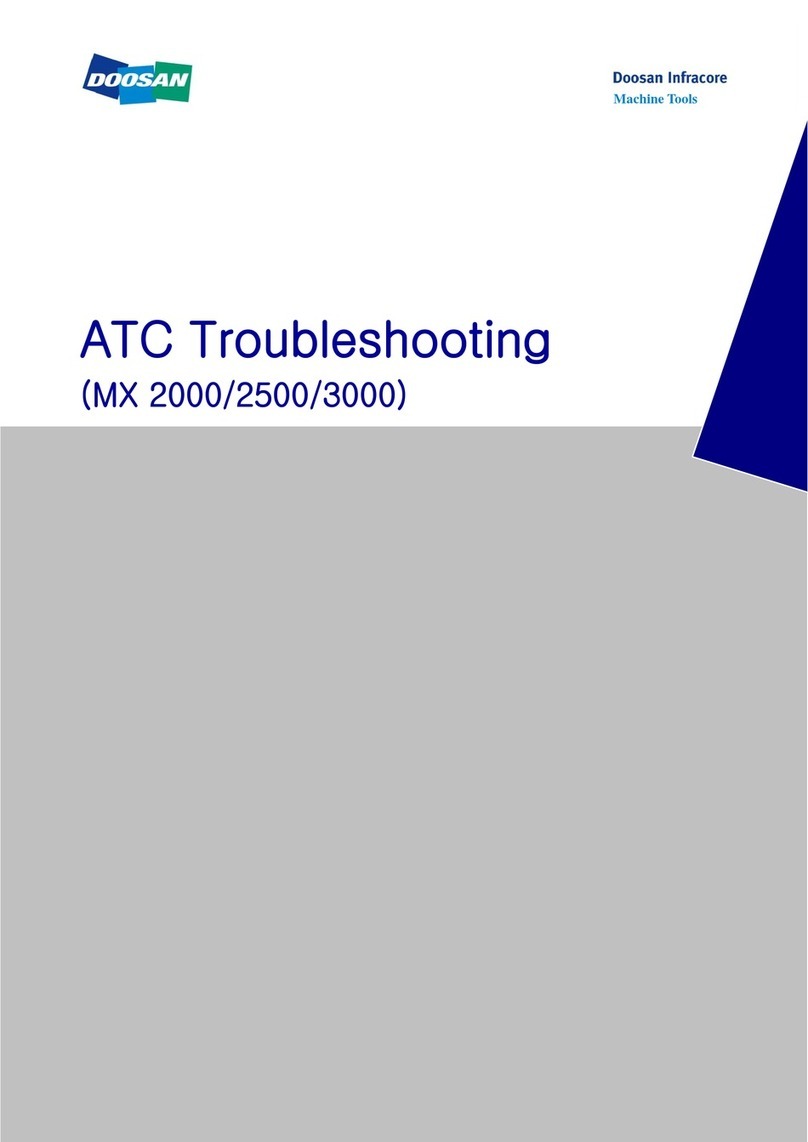
Doosan
Doosan MX 2000 Troubleshooting

Anhui Pan-sino
Anhui Pan-sino BL330E operating instructions
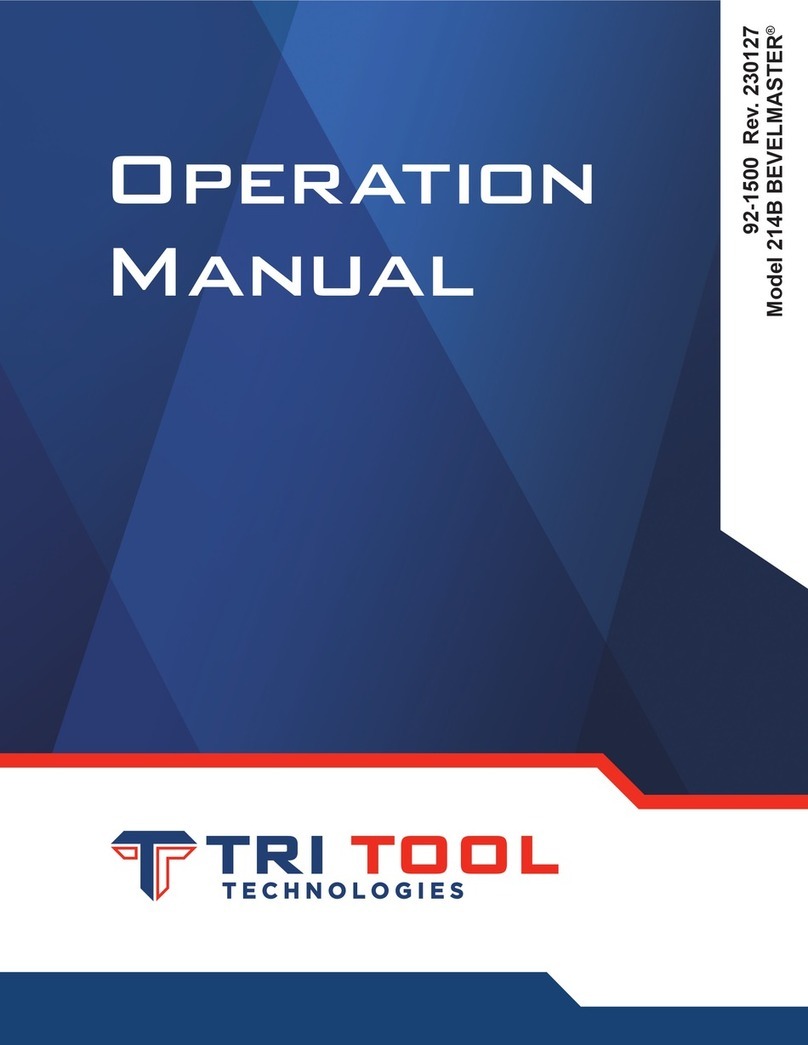
TRI tool
TRI tool BEVELMASTER 214B Operation manual
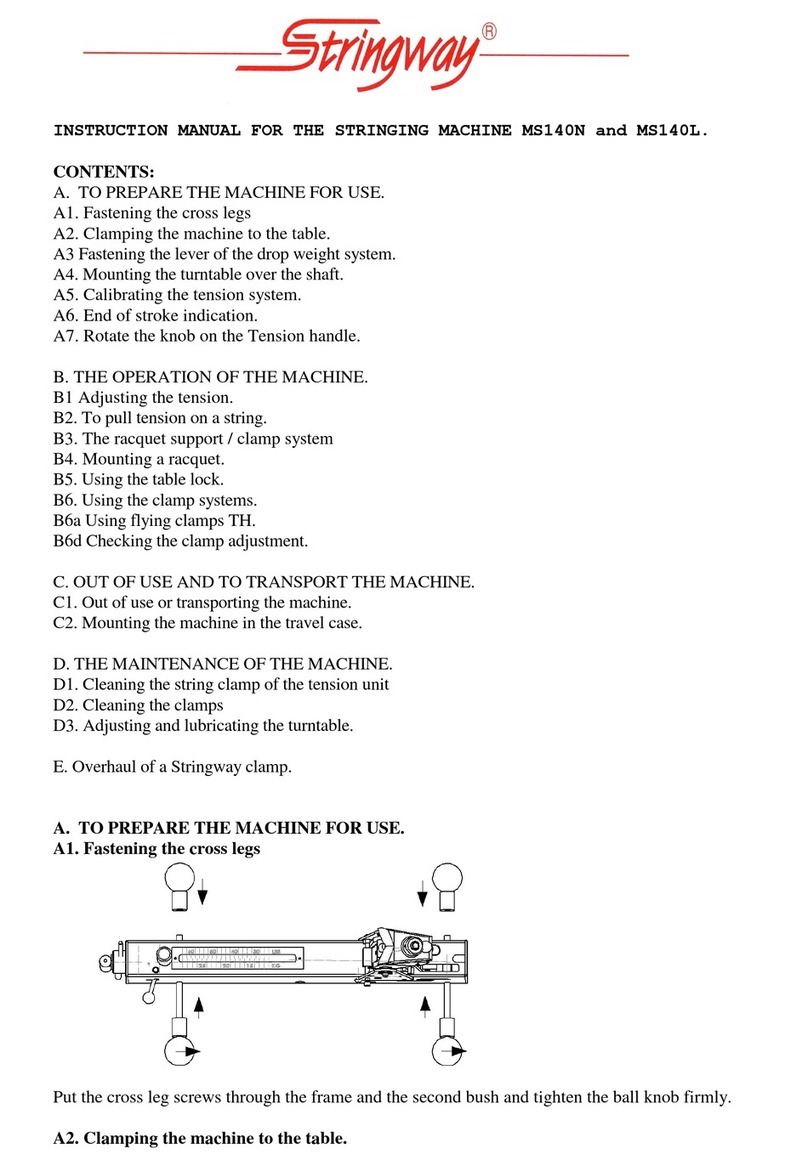
Stringway
Stringway MS140L instruction manual
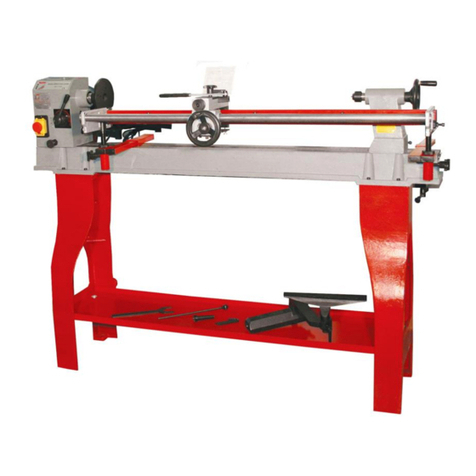
HOLZMANN MASCHINEN
HOLZMANN MASCHINEN VD 1100N user manual

MicroLux
MicroLux True-Inch 84631 instruction manual
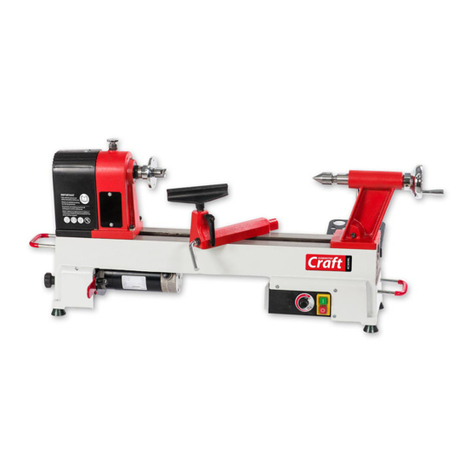
Axminster Craft
Axminster Craft AC305WL Original instructions
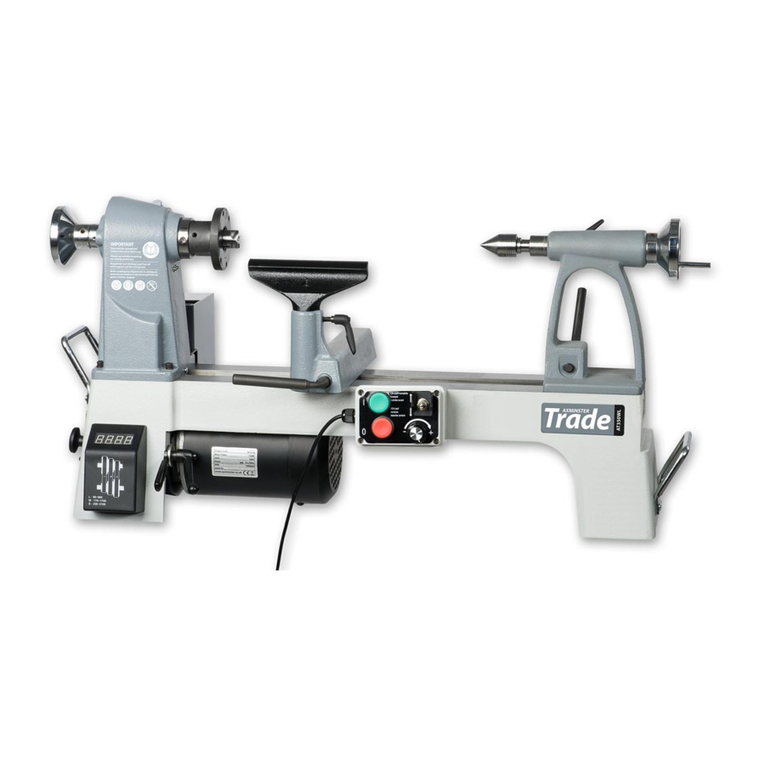
Axminster Trade
Axminster Trade AT350WL Original instructions

Steel City
Steel City 60170 user manual
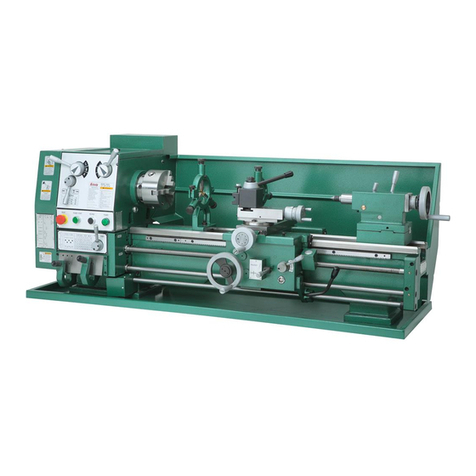
Grizzly
Grizzly G4003 owner's manual
